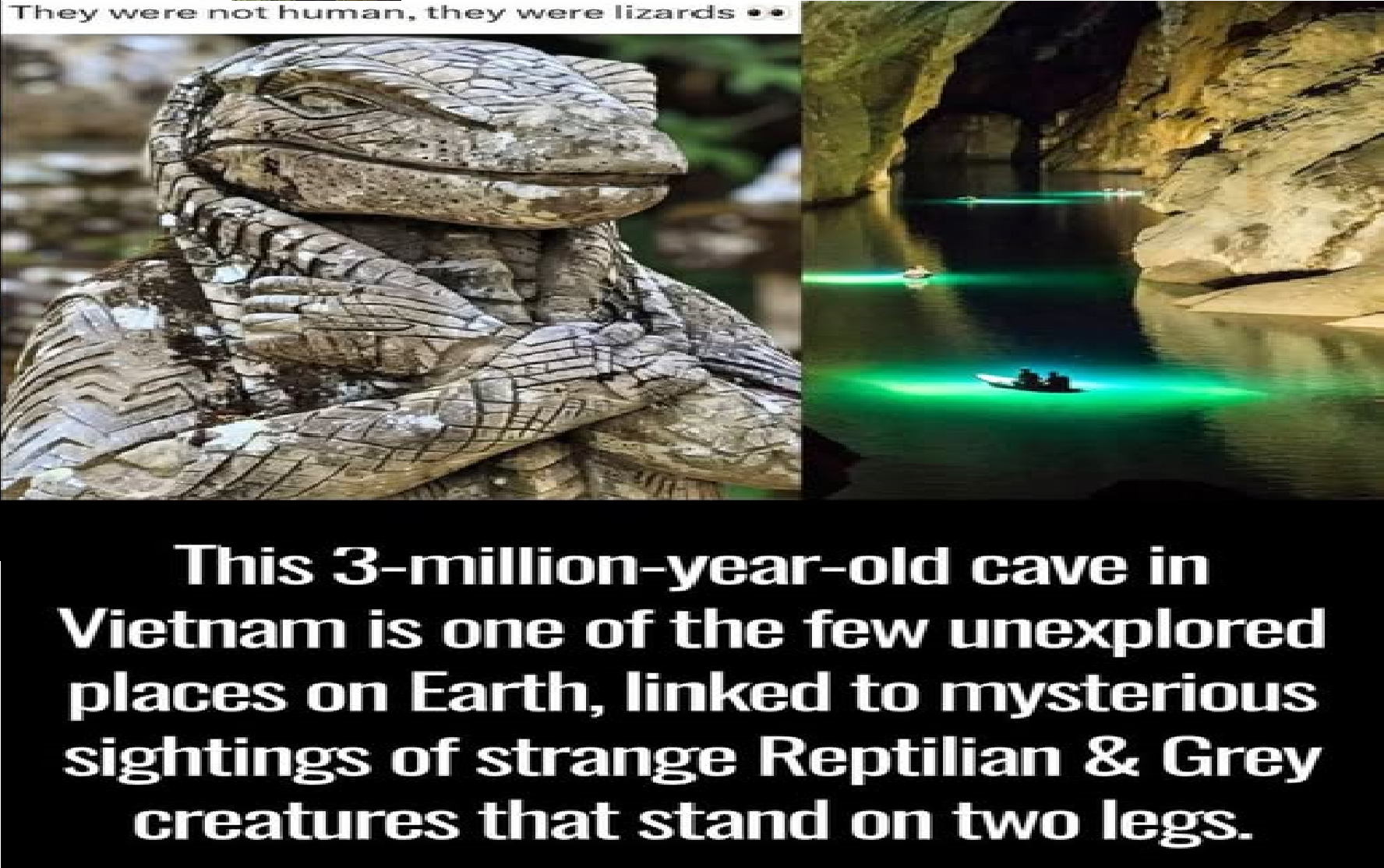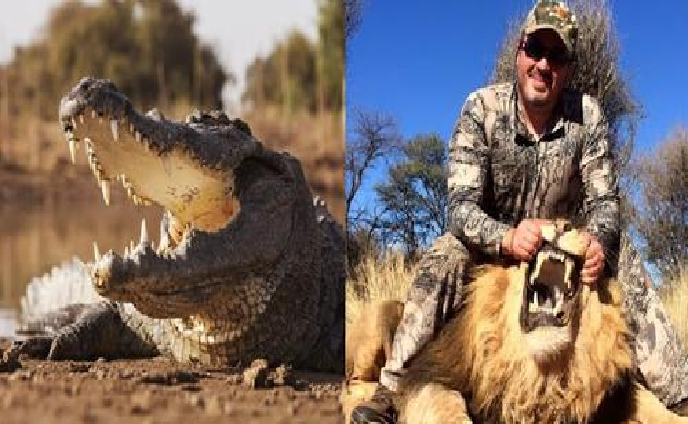The Myth and Mystery of Vietnam’s Caves: Science, Legends, and the “Gray Apparitions”
Deep in the forests of central Vietnam lie majestic cave systems, ancient karst formations, and hidden caverns whose age stretches back millions of years. These subterranean realms have long sparked both scientific interest and local folklore. In recent years, some sensational claims have emerged: that in one of Vietnam’s caves—allegedly around three million years old—unexplored depths shelter strange, “gray” humanoid or reptilian entities. Such stories captivate the imagination, but what do we actually know? And what remains in the realm of conjecture?
Vietnam’s Caves: Geological and Archaeological Marvels
Vietnam is home to some of the world’s largest and most spectacular caves. The Phong Nha–Ke Bang National Park, for example, contains Hang Sơn Đoòng—the largest-known cave passage in the world by volume—alongside many other enormous caves, non-explored or partly explored. These caves are formed in karst limestone regions, shaped over tens to hundreds of millions of years by water dissolving rock, creating subterranean rivers, chambers, stalactites, stalagmites, underground ecosystems, and more.
Some of these caves contain fossils, very old geological strata, and materials that help us reconstruct the Earth’s past climates and biological diversity. For instance, Toi Cave (Dark Cave) in Quang Binh province has yielded fossils of karst systems hundreds of millions of years old. VietNamNet News
There are also caves with archaeological remains: artifacts, tools, burials, remains of prehistoric humans or their ancestors in some caves scattered throughout Vietnam. One example is C6-1 volcanic cave in Dak Nong province, showing signs of human use, relics, and burials dating back thousands of years. vietnam.vn
The Stretch to Three Million Years
When a cave is said to be “three million years old,” that can refer to various geological ages: the formation of the rock, the active shaping by water, or the age of sediments inside. Caves, especially in karst systems, are complex: parts may be ancient bedrock, parts relatively younger, recycled by water or collapse, filled with sediments that have varied ages. To assert “three million years” with precision requires rigorous geological, archaeological, and paleontological data: dating of mineral deposits (speleothems), stratigraphic layers, possibly microfossils, etc.
So far, I was unable to find peer-reviewed research that confirms a cave in Vietnam being exactly or roughly three million years old in terms of its explored, unaltered parts being genuinely untouched or unexplored. It’s a plausible scale for some geological features, but the “unexplored + inhabited by strange creatures” story is not supported by credible scientific literature.
Legends, Folklore, and Modern Myths
Human culture across the world builds myths around caves, darkness, the unknown—places that are liminal, crossing the boundary between light and dark, surface and interior. In Vietnam, many ethnic minority groups have cave myths, spirits, and tales involving unusual beings. These stories may serve symbolic, moral, or spiritual purposes, or may emerge from attempts to explain echoes, shadows, unknown animal footprints, or fear.
In recent decades, with increased global interest in UFO, cryptid, and paranormal lore, some of these stories have been picked up by fringe media, podcasts, or television shows, which may embellish them. For example, speculative claims exist (in blogs or unsourced “Ancient Aliens”-style content) alleging that Hang Sơn Đoòng cave or other caves are linked to sightings of “gray” creatures or reptilian humanoids. But these are almost always anecdotal, without verifiable evidence. Googling reveals that many of these claims trace to Reddit threads, conspiracy websites, or non-scientific television segments. There is no verified photographic, video, physical sample, or credible eyewitness testimony accepted by institutions that confirm the existence of such beings.
Therefore, these stories remain folklore or modern myth rather than validated fact.
What Would Make the Claims Credible
To transform an intriguing but unsubstantiated claim into credible knowledge, several criteria would need to be met:
- Location and Geology Established: Precisely which cave is being claimed to be “3 million years old”? Has geological dating (e.g., uranium-thorium dating of speleothems, or stratigraphic analysis) been published in peer-reviewed journals?
- Biological Evidence: Reliable physical evidence of “gray” or reptilian creatures— photographs, biological samples, DNA analysis, etc. Without these, claims remain anecdotal.
- Multiple Independent Witnesses: Stories from locals, explorers, scientists that are consistent, with records (maps, timestamps), not only hearsay.
- Scientific Exploration and Survey: A legitimate expedition by speleologists, biologists, archaeologists, using accepted methods to survey inside caves, map passages, analyze faunas.
- Peer Review and Publishing: Data published in credible journals, with critical evaluation by other experts.
Until such evidence emerges, the claims stay speculative.
Why the Stories Endure
There are several reasons why tales of “gray apparitions” or reptilian humanoids in caves capture public attention:
- Caves are mysterious: dark, often unexplored, with unusual acoustics, hissing, dripping water, bats, insects—easy to imagine odd shapes or silhouettes in faint light.
- Fear and wonder: humans have a long cultural history of telling ghost stories, tales of hidden beings, spirits underground. These amplify over time.
- Conspiracy and sensationalism sells: shows, blogs, social media often prefer dramatic narratives over uncertainty.
- Cognitive biases: misidentification (is that a bat, a rock, a root?), hallucinations in low light, etc.
Balancing Openness with Skepticism
Science does not dismiss extraordinary claims out of hand, but it requires extraordinary evidence. There has been no verified, detailed documentation (from scientific institutions) of humanoid reptilian entities or “gray apparitions” deep in Vietnamese caves. If someone claims that, we must ask:
- Is there a photograph or video? What is its resolution or reliability?
- Are there biological specimens? Could alleged sightings be known animals (e.g. bats, snakes, cave fish, insects) under strange lighting?
- Who collected the data, and how was it vetted?
Conclusion
Vietnam’s caves are among Earth’s geological and biological treasures. They offer fossils, ancient sediments, archaeological traces of past human life, unique ecosystems. These caves evoke awe, wonder, and sometimes fear—and so it is natural that myths and legends accumulate around them, especially in places that are difficult to access.
The notion of a “3-million-year-old cave still unexplored” that harbors “gray apparitions” or reptilian humanoids is, at present, a compelling story—but not one verified by scientific evidence. It is a mix of plausible natural grandeur and human imagination.
If new credible science emerges—say, a well-equipped expedition documenting something extraordinary—it would be headline-worthy. Until then, these tales are best approached with curiosity and careful analysis: to appreciate the mystery without mistaking fiction for fact.
If you like, I can try to dig up where the original “gray apparition” claim comes from, and whether there’s any credible researcher examining that. Do you want me to follow that up?






